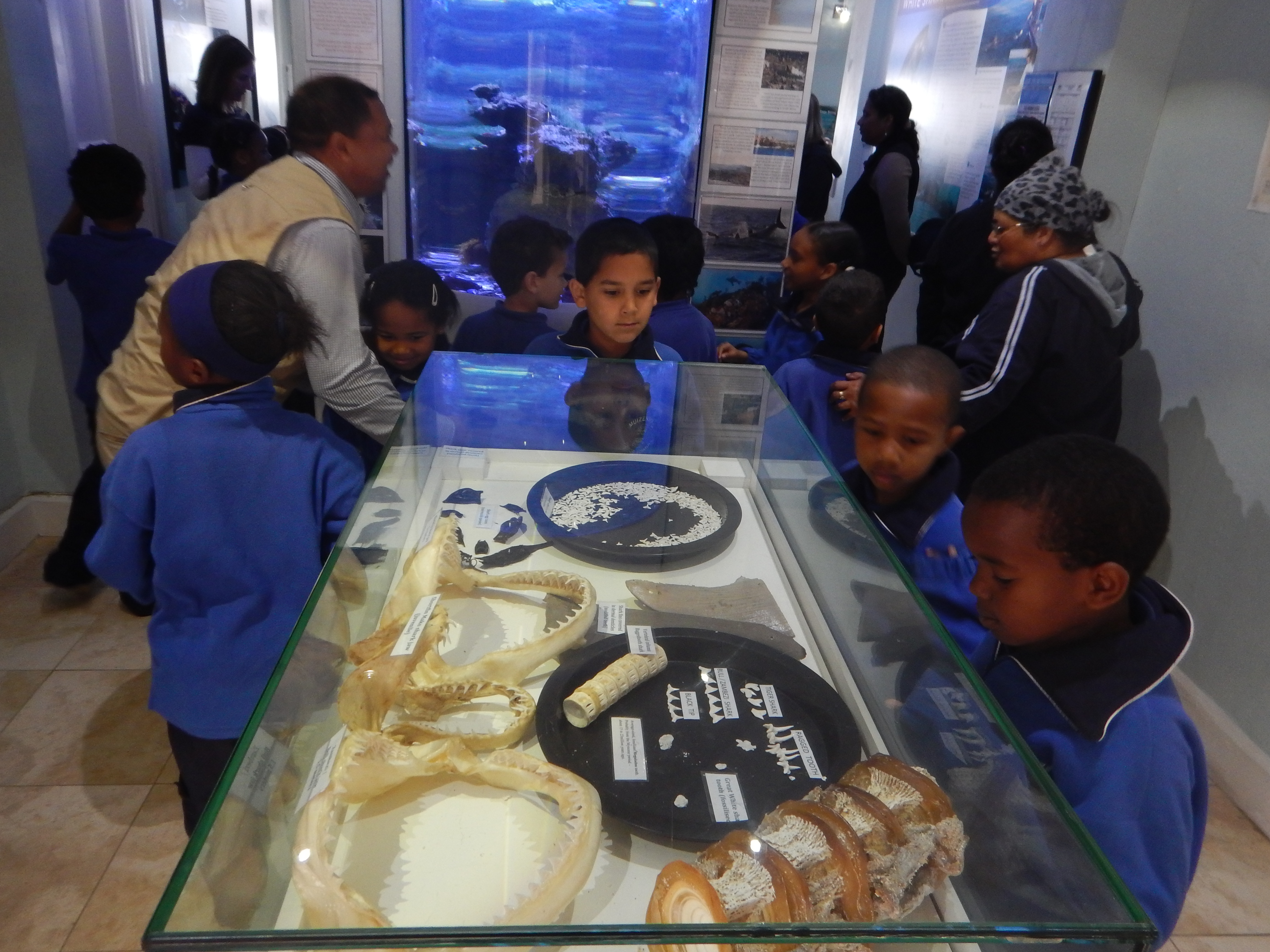Sharks, kids and teeth
Words by: Paul Millar
When talking to kids about sharks, there are certain topics that come up more often than others. But no matter how hard one tries to touch on the many fascinating aspects of this diverse group of fish, it seems that sharks’ teeth are the greatest source of fascination for most kids – and, indeed, why not? The shark’s ability to constantly replace its teeth with brand-new, razor-sharp ones to the tune of about 30,000 in its lifetime is pretty amazing. Despite the fact that sharks bite humans extremely rarely, the word ‘shark’ does seem to be synonymous with that other toothy word, ‘bite’. Yet while it’s not surprising that sharks’ teeth are a source of interest, the fascination with teeth seems to run a little deeper.
The award-winning, SOSF-backed, children’s shark documentary, The Shark Riddle, takes full advantage of this fascination and weaves its educational messages around a plot involving a search for the tooth of the largest living fish – the plankton-eating whale shark, as it turns out. The movie uses shark teeth as the vehicle for both knowledge-building and age-appropriate humour, and kids love it! Finding wonder and humour in the very part of the animal most likely to invoke fear goes a long way towards replacing a negative image of sharks with a well-deserved sense of awe – a great idea on the film-maker’s part.
During our shark lessons at the Education Centre, the teeth we display are always a hit. Kids marvel at the rows of teeth in a shark’s jaw and are eager to feel just how sharp they are. They’ll also stick their head into a set of shark jaws on display – if given the chance – and are often encouraged by their camera-wielding teacher. When shown a fossilised tooth of a great white shark, there’s an impressed gasp from most class members, but this pales in comparison to the rapturous applause that is unleashed when they are shown an ancient megalodon tooth – size clearly counts. ‘But why aren’t these teeth white?’ I ask. ‘Too much junk food’ or ‘He didn’t brush his teeth’ are the predictable responses from the kids, who are delighted by the idea of a never-ending supply of teeth and the obvious implications this dentition has for reduced personal hygiene and frequent, lucrative visits from the tooth fairy.
While the endless tooth supply of sharks tends to invoke envy in us ageing adults, schoolchildren seem to feel some sort of kindred spirit with their fellow tooth-shedders. When shark’s teeth are discussed, very often the topic will shift to children’s stories of their own teeth, and personal oral examinations are demanded by open-mouthed kids, eager to show off new gaps or wiggly milk teeth. During the snack break that follows the lesson, I’m frequently called upon to be witness to kids’ personal collections of teeth – either to confirm the species of shark from which the tooth has come, or to examine the quaintly rotten remains of one of their own teeth, presumably overlooked by a tooth fairy with high standards.
We often take groups of schoolchildren down to the beach to learn about the marine life along the shore. It’s amazing how many of them find ‘shark teeth’ everywhere – broken pieces of shell are held up and claimed as shark teeth. And the obsession with teeth isn’t restricted to sharks. Tooth-lined fish jaws (often from our local barracuda-like snoek) are admired by the youngsters; even the humble sea urchin’s teeth seem to earn praise. Last week I noticed a child, flat on her stomach, nose to the rocks, seemingly transfixed by something fascinating. ‘What have you discovered?’ I asked. ‘It’s my tooth,’ she replied anxiously. ‘It’s fallen out and landed in a crack in the rock.’ After much scratching around, we eventually retrieved it from among the barnacles. The girl, her sleeve blood-stained from wiping her mouth, was visibly relieved and added her own little tooth to her collection of marine treasures.
Hopefully, the tooth fairy provided adequate compensation for this much-loved biting implement.




